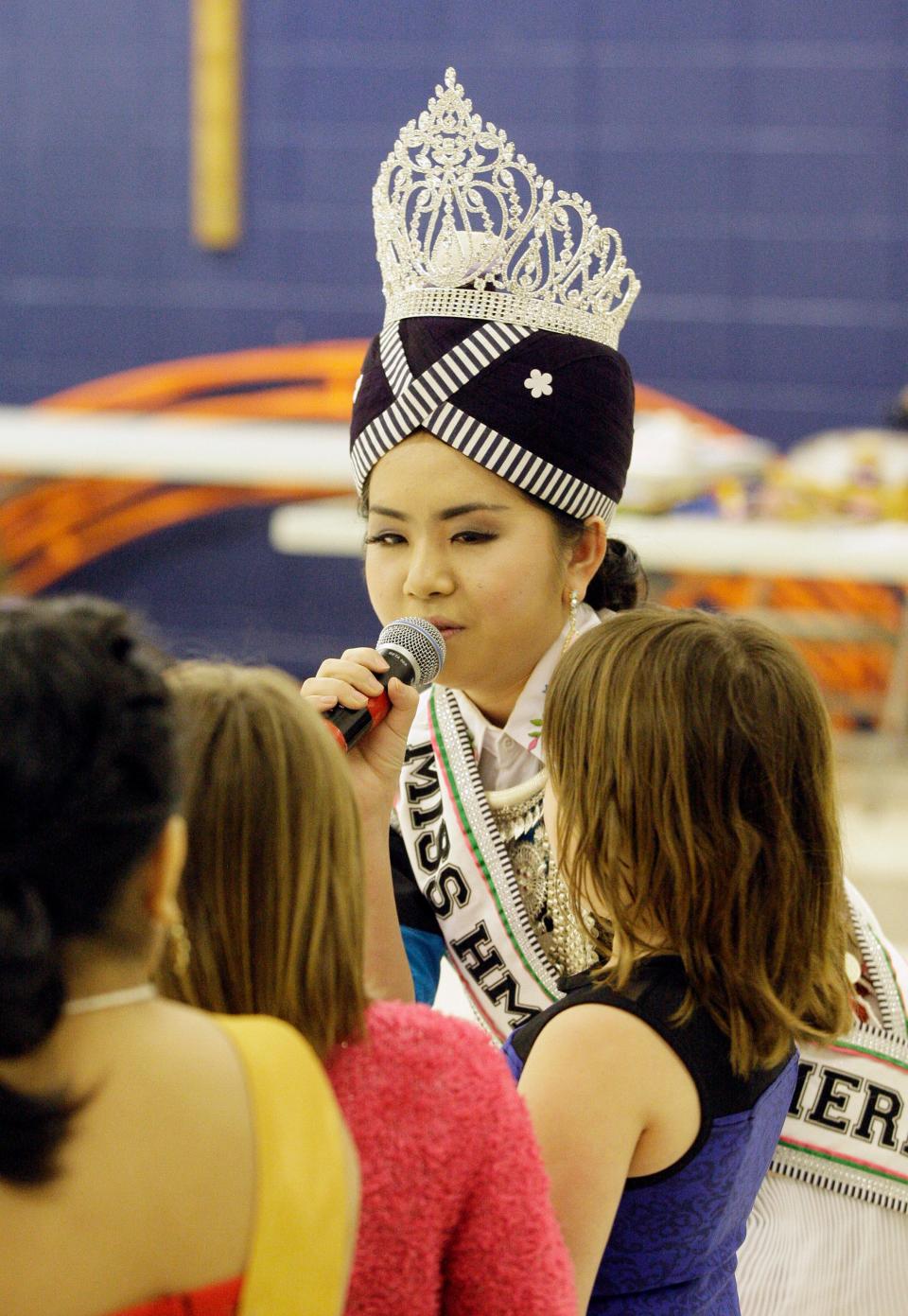The Hmong headwrap is a key piece of Milwaukee's evolving community
When she was a teenager, UW-Milwaukee professor Chia Youyee Vang remembers how her mother and aunt wrapped a long, purple cloth into a turban around her head. Then decorated with a black-and-white striped ribbon, it was one piece of the elaborate traditional clothing Vang would wear to celebrate the Hmong New Year.
Today, the phuam txoo suab is more hat than headwrap. It’s often sold pre-wrapped, and it might be embroidered with silver coins or shiny beads. At annual New Year celebrations at Wisconsin State Fair Park, it’s a common headpiece for girls and women.
The headwrap’s evolution parallels Milwaukee’s Hmong community in some ways. Today’s young generation fuses American culture with the traditions of their parents and grandparents, who fled Laos as refugees in the 1970s and 80s.

Older immigrants worry about language and culture fading. But they also see their descendants blossoming: earning degrees, running businesses and buying homes in neighborhoods across the area.
Milwaukee County is home to about 13,000 Hmong, census data shows. That’s nearly one-third of all Asian residents in the county.
Like the Germans, Poles and Italians before them, the Hmong have made their mark on Milwaukee. The ways they’ll express and share their traditions with the city will only become more intricate as their roots deepen.
See the rest of Milwaukee's 100 objects
This article originally appeared on Milwaukee Journal Sentinel: The Hmong headwrap is a key piece of Milwaukee's evolving community

